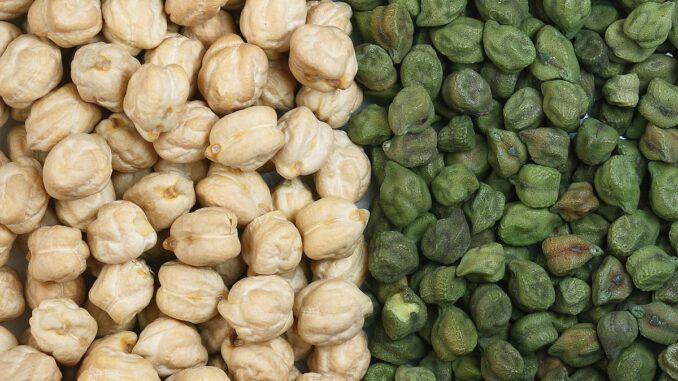
In News
Indian scientists have developed a new drought-tolerant chickpea variety.
In-Detail
- The development of the new chickpea variety is a collaborative effort of scientists from National Institute of Plant Genome Research, New Delhi, University of Hyderabad and Indian Institute of Pulses Research.
- The new variety is a genetically modified variety.
- It has a high tolerance to drought and has high iron and zinc content in the seeds due to the modifications made in the plant’s growth substance called cytokinin in the root.
- Cytokinin and Auxin are two major plant hormones that regulate root development.
- In the new variety, scientists expressed a gene for an enzyme called cytokinin oxidase 6 (CKX6).
- This enzyme degrades cytokinin under a root-specific promoter (P WRKY31) in chickpea.
- Researchers found that limiting the cytokinin activity led to roots growing deep in the soil and acquiring more water and nutrients from the soil during drought.
- As such, the plants acquired more resources from the soil, lived longer and produced more seeds.
- Also, the result of this long and branched root system is high iron and zinc content in the seeds.
- According to the scientists, yield loss in chickpea can be reduced by following this cytokinin-manipulated enhancement of root system combined with traditional breeding practices.
Threat of Genetic Modification
- As per the researchers, the gene and promoter both were from the chickpea itself.
- This means that there is no threat of genetic modification harming humans.
- In many cases of genetic modifications in food crops across the world, genes from specific bacterial species were used.
- This usage has led to many questioning the harmfulness of such food crops to human consumption.
- In India too, there is a ban on genetically modified food crops.
- Only Bt cotton, which is genetically modified with genes taken from bacillus thuringiensis (Bt) is allowed for growing in the country.
Importance of Chickpea
- Chickpea, also know as benga gram, is one of the major sources of protein for people in the country.
- The crop is grown mainly in semi-arid regions post-monsoon season.
- In such conditions, the crop faces the threat of drought and yields dropping.
- There is thus a need for the development of drought-tolerant chickpea varieties with high yields.
- The new variety well suits the prevailing chickpea cultivation conditions in the country and will help farmers earn better returns with high yields.
- India already ranks first in the cultivation of Chickpea in the world.

Leave a Reply
You must be logged in to post a comment.